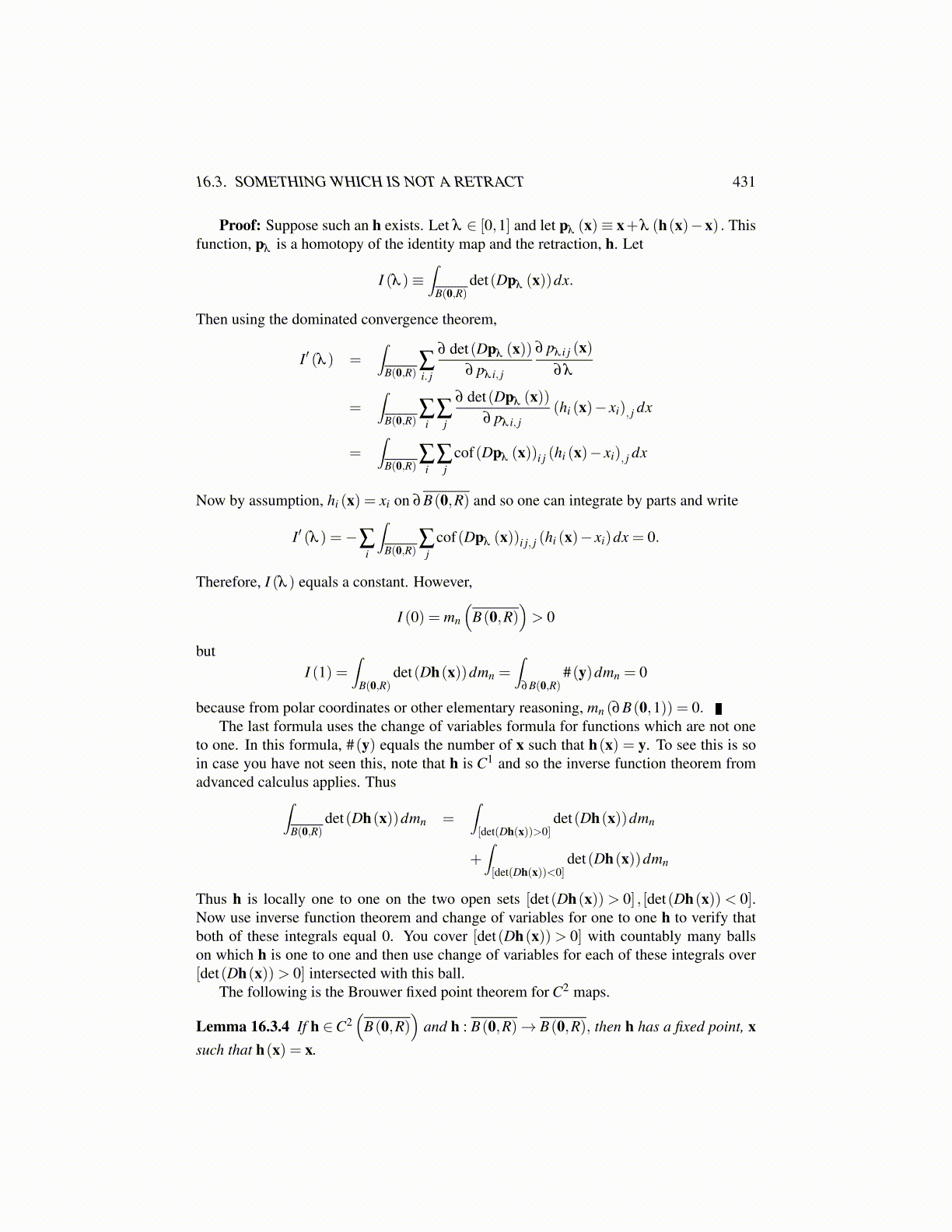
16.3. SOMETHING WHICH IS NOT A RETRACT 431
Proof: Suppose such an h exists. Let λ ∈ [0,1] and let pλ (x)≡ x+λ (h(x)−x) . Thisfunction, pλ is a homotopy of the identity map and the retraction, h. Let
I (λ )≡∫
B(0,R)det(Dpλ (x))dx.
Then using the dominated convergence theorem,
I′ (λ ) =∫
B(0,R)∑i. j
∂ det(Dpλ (x))∂ pλ i, j
∂ pλ i j (x)∂λ
=∫
B(0,R)∑
i∑
j
∂ det(Dpλ (x))∂ pλ i, j
(hi (x)− xi), j dx
=∫
B(0,R)∑
i∑
jcof(Dpλ (x))i j (hi (x)− xi), j dx
Now by assumption, hi (x) = xi on ∂B(0,R) and so one can integrate by parts and write
I′ (λ ) =−∑i
∫B(0,R)
∑j
cof(Dpλ (x))i j, j (hi (x)− xi)dx = 0.
Therefore, I (λ ) equals a constant. However,
I (0) = mn
(B(0,R)
)> 0
butI (1) =
∫B(0,R)
det(Dh(x))dmn =∫
∂B(0,R)#(y)dmn = 0
because from polar coordinates or other elementary reasoning, mn (∂B(0,1)) = 0.The last formula uses the change of variables formula for functions which are not one
to one. In this formula, #(y) equals the number of x such that h(x) = y. To see this is soin case you have not seen this, note that h is C1 and so the inverse function theorem fromadvanced calculus applies. Thus∫
B(0,R)det(Dh(x))dmn =
∫[det(Dh(x))>0]
det(Dh(x))dmn
+∫[det(Dh(x))<0]
det(Dh(x))dmn
Thus h is locally one to one on the two open sets [det(Dh(x))> 0] , [det(Dh(x))< 0].Now use inverse function theorem and change of variables for one to one h to verify thatboth of these integrals equal 0. You cover [det(Dh(x))> 0] with countably many ballson which h is one to one and then use change of variables for each of these integrals over[det(Dh(x))> 0] intersected with this ball.
The following is the Brouwer fixed point theorem for C2 maps.
Lemma 16.3.4 If h ∈C2(
B(0,R))
and h : B(0,R)→ B(0,R), then h has a fixed point, xsuch that h(x) = x.